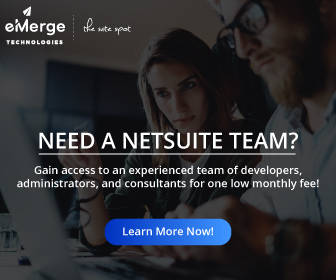- CALL : (+1) 407-273-1001
- Main Office : (+1) 407-273-1001
- Enterprise Integration
- Mar 26
- 5 mins read
The Savvy SaaS Users Guide to SaaS Integration!

In the year 2018, SaaS integration is not something to be unaware of. Companies all over the world are diving head first and spending millions of dollars on integration projects because they understand the benefits that SaaS integration provides for their brand. So we decided to create this guide to help SaaS users get a leg up on the competition by teaching them what SaaS integration is, what it can do for a business, and how it can be done.
What is SaaS Integration?
So what is SaaS integration? SaaS Integration is the process of creating a way for software applications, which run in the cloud, to share information.
Let’s look at an example. Let’s say your business uses NetSuite to manage its accounting and inventory data and also uses the Shopify platform to manage its website and eCommerce processes. Without an integration, if you wanted to record the sales information from your website into your accounting platform, you would need an employee to sign into Shopify, take a look at the sales data, and then sign into NetSuite and manually update the accounts that have been affected by the new sale. If you were to integrate these SaaS applications, you would be creating a way for these platforms to communicate without the need for an employee to move the data manually. A third party “Integration Application” would be triggered by a sale on the website and then push the information into your accounting platform where it would update the books and inventory automatically.
This is just an example based on specific business use case, but the main idea is that the information from one cloud platform has been transferred to another cloud platform without the need for human intervention.
Benefits of SaaS Integration
The example above may give you some idea of the possible benefits that SaaS integration can provide a business. The main benefit of SaaS integration is what is called business process automation or BPA. BPA is the idea that a business process, such as updating your accounting platform with sales information, has been automated through software technology. SaaS integration is the software technology that allows BPA to happen.
BPA has three benefits:
Fewer man hours need to be devoted to manual data entry tasks- By having a software application automatically moving critical data back and forth between their appropriate platforms, your business will free up employees and resources to focus on other endeavors.
Fewer Data Errors Due to Human Interaction – Unfortunately, no matter how vigilant or happy your employees are, you can always count on them to make mistakes. It could be getting a shipping address wrong, or leaving off a decimal place. Even small errors like this can add up and cost the company money over time. By relying on a software application, with computer precision, you can reduce the data errors within a process to zero. Computers never get sick, never have bad days, and never get tired. They are, in fact, model employees.
Real-Time Data Overview – Since the process is automatic, and you are not waiting for an employee to make the latest changes in a given process, you can always have a view of your data in real time. This can lead to faster and more informed decisions.
All of these benefits boil down to one thing; EFFICIENCY. SaaS integration and BPA make your business faster, cheaper, and smarter. It is no surprise that companies are pouring millions of dollars into this technology. SaaS Integration is the new arms race, and smart business see the writing on the wall; adapt or be left behind. If you want to learn more about the benefits of SaaS, we’ve written another article that goes more in-depth into the benefits SaaS integration provides.
How is SaaS Integration Achieved?
SaaS integration is possible due to APIs. API stands for application programming interface, and an API acts as a gatekeeper for the information a cloud application stores. A SaaS integration will automate the communication between two API’s and allow them to share information as needed by the company. If you want to learn more about API’s and how they interact, you can read our article on API Integration to learn more.
A lot of SaaS applications are becoming aware of the need for their applications to communicate with other software and are building out their APIs and even creating applications that come with popular integration capabilities native to the application.
However, this is still not always the case. Many applications will require third-party software to be built that can communicate with the SaaS API’s and bridge the applications. So as of right now, if your working with two SaaS applications and you would like to integrate them, you have three options.
1. Look for a connector – If the SaaS applications and the need you have are popular enough, there will usually be a pre-built integration app that you can license from a third-party vendor. This “connector” will be a specifically designed to integrate the two applications you wish to bridge and will usually have some functional limitations due to its pre-built nature and will usually require monthly fees.
2. Purchase an Integration Platform (IPaaS) – Integration platforms are software applications that are specifically and entirely designed to develop integration applications for other software applications. They are usually cloud-based as a service as well. With an integration platform, you can build, customize, and manage your integrations at your own pace. You can check out our guide on IPaaS solutions to learn about them. These platforms are great for businesses with multiple applications to connect, lots of data, or complex workflows that would require timely integration. You can check out Jitterbit.com for an example of an IPaaS solution. Jitterbit is eMerge Technologies preferred Integration solution.
3. Custom Integration Application – The third option is to have a custom integration application designed for you. Integration experts, like the ones at eMerge Technologies, will work you to find out your needs and hand-code an application that fits them. This option is usually necessary if you are trying it integrate lesser known applications and/or the budget for an integration platform is not available. Hand coded applications will not come with monthly fees, however, tend not to scale with your as well as an IPaaS.
If you want to learn more about the pros and cons of each of these solutions, you can check out our article for a more in-depth view of API integration tools.
Conclusion
The value of SaaS integration is undeniable. The only questions that remain are how can your business best take advantage of this technology. What processes should you automate and how can this best be done are going to be the questions CIO’s and SaaS administrators will be focusing on for years to come. If you have a SaaS integration project and you need some help, eMerge Technologies offers SaaS integration services and can provide you with the tools and support for a successful integration!
Jeremy McCourt is an content producer in the enterprise software industry that focuses on NetSuite and related cloud-based software solutions.
Related Posts

What is Dell Boomi? The 2023 Guide to a Leading IPaas
Contact us! eMerge Technologies has been creating integrations with the NetSuite platform for the past 15 years. And in that period, we have watched a number of innovations come on the market that makes integrations…
- Jan 06
- 5 mins read

NetSuite Integration Apps: Top Options to know in 2023
What are NetSuite Integration Apps and Why Do You Need Them? NetSuite integration apps are tools that enable businesses to connect NetSuite, a cloud-based enterprise resource planning (ERP) software, with other systems and applications. This…
- Dec 22
- 9 mins read

